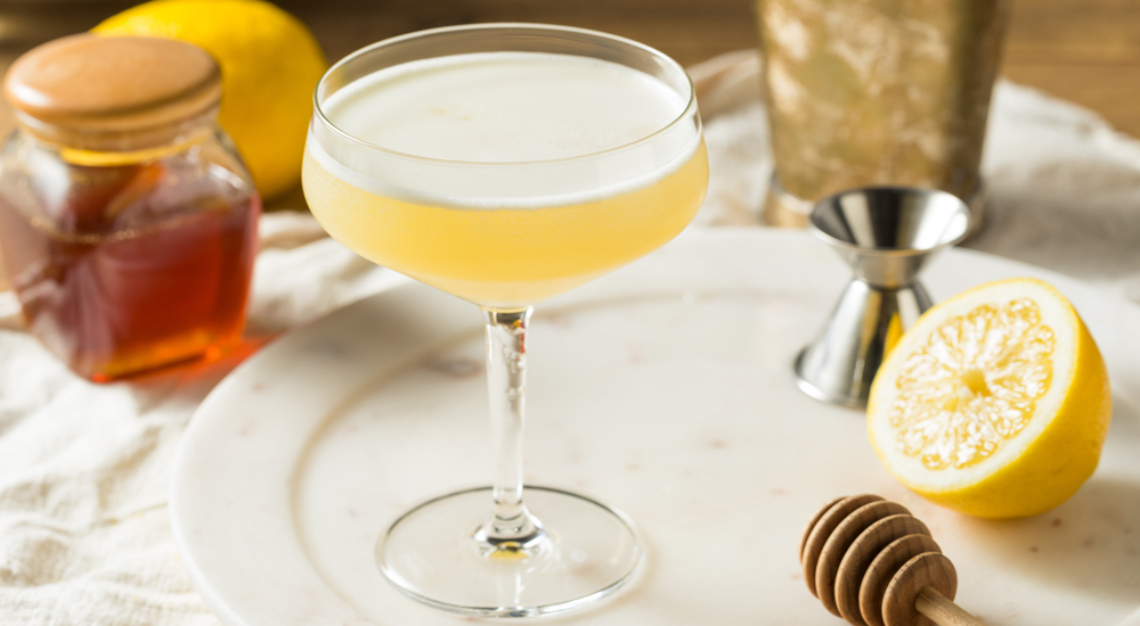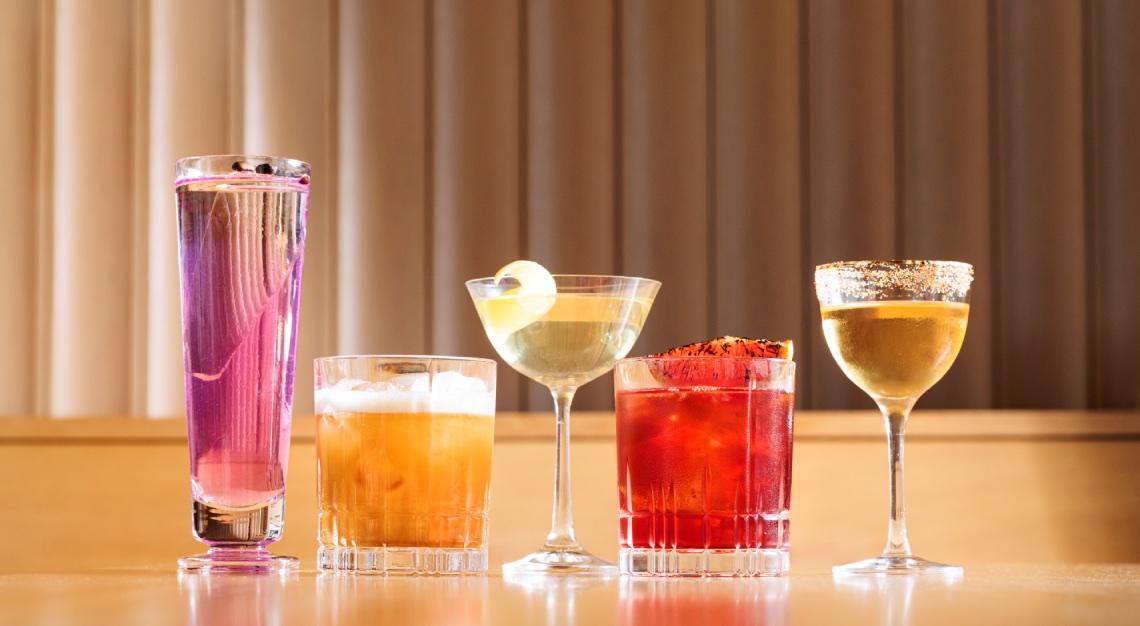Unsinkable Molly Brown survived the Titanic and then went on to make a cocktail classic
I suppose the first thing to say is that bees do, indeed, have knees. Best to clear that up right away.
As a phrase, especially as a ridiculous one, the “bee’s knees” has lived an unusual amount of lives. It’s always been nonsense, but strangely, the type of nonsense, it’s particular flavour, has evolved. In the 1700s, it just meant something vanishingly small: An eyelash, say, would be “no bigger than a bee’s knee.” By the early 1900s, it lost the diminutive sense and took the role of utter gibberish, linguistic packing peanuts, signifying nothing: A spoofy little comedic report on a ship in 1906 lists the cargo as “a quantity of post holes… and seven cases of bee’s knees.” Things that not only don’t exist but can’t exist.
But then by the early ’20s the phrase takes an unexpected left turn, becoming inducted into a surprisingly expansive bestiary of two-word phrases, all of which meant “excellent”: the ant’s pants, the duck’s quack, the cat’s pyjamas, the caterpillar’s kimono (seriously), and so on and so on. All of them meant that something was great, and the bee’s knees was a natural fit. It’s fun to say and it rhymes, and for the exuberance of the roaring ’20s, apparently that was enough.
Before the end of that decade the Bee’s Knees would take on its final definition, this one a bit more tangible: a cocktail of gin, lemon and honey. It would do so through none other than Mrs Margaret Brown, the so-called “Unsinkable Molly Brown.” Brown was an impressive person to say the least. After separating from her husband J.J. and then surviving the sinking of the Titanic (Kathy Bates in the film), she was a progressive activist and leading suffragette, mediated labor disputes, spoke four languages, ran for the U.S. Senate five years before she was even allowed to vote, and spent her waning years back and forth between the U.S. and France, where she had first arrived for humanitarian aid after WWI and then later stayed, drawn to the joie de vie of the Parisian lifestyle.

It was there, in April of 1929 that the Standard Union, writing of the phenomenon of all-female nightclubs in Paris, noted her final lasting contribution to civilisation: “The Bee’s Knees is an invention of Mrs. J.J. Brown of Denver and Paris… and is a rather sweet combination including lemon and honey.” She was a 62-year-old non-bartender having a ball at unisex nightclubs and in so doing, invented a cocktail we’d be talking about almost 100 years later. Incredible.
In any event, the cocktail first shows up in print the following year, in the 1930 edition of Boothby’s World Drinks and How to Mix Them, curiously with the addition of orange juice. It’s featured in David Embury’s The Fine Art of Mixing Drinks in 1948, who spuriously claims it was invented to soften bathtub gin (Embury was full of fiercely held, semi-informed opinions and reading his book makes you glad he’s not your father-in-law), and he also notes that a little orange juice makes an “interesting variation.”
Indeed, these days nearly every recipe cites interesting variations. The Bee’s Knees is great for that kind of thing, an extremely gracious cocktail that is unusually welcoming of other flavours, and therefore can make anyone feel like a great bartender: Add some St. Germain, throw in a grapefruit peel, add a dash of lavender bitters, infuse the gin with tea, spike it with rosemary, whatever, it’s all going to be great. The Bee’s Knees isn’t here to demand perfection or obedience. It’s a cocktail of the roaring ’20s, a cocktail with a silly name, a simple drink to enjoy the sweetness of springtime and get a little boozy while you’re at it. Live it however you like.

The Bee’s Knees
2 oz. gin
0.75 oz. lemon juice
0.75 oz. honey syrup (to taste)
Add ingredients to a cocktail shaker with ice, shake hard for 10 to 12 seconds and strain off the ice into a coupe or martini glass. Garnish with a lemon peel, a lemon wheel or even nothing at all.
Editor’s note on ingredients
Gin: This cocktail likes pretty much all gins except for overly citrusy ones. Classic London Dry giants like Beefeater and Tanqueray work excellently here, though the more citrus-forward Tanqueray 10 less so (save that for martinis). You don’t need to buy a special gin for this, use whatever you’ve got, though I will just note that Aviation Gin, with its lavender and sarsaparilla, makes a very cool version.
Honey Syrup: You have to turn honey into a syrup, as opposed to just squeezing from the bear into the cocktail tin, because honey in its normal state will freeze onto the ice and not mix in your drink. Standard wisdom says two parts honey to one part water, which works perfectly well. All I’ll add to this is that if you’re a big fan of honey, consider trying 3:1 honey to water. It doesn’t add as much more sweetness as you’d think, but rather mostly intensifies the honey note, a surprising presence and depth, literally amping it up by 50 percent. It’s delicious.
Variations: You don’t need to mess with the drink – it’s just fine on its own – but if you had a mind to and I had to guide you one way or another, I’d guide toward florals. A couple drops of rose water or an Elderflower liqueur like St. Germain or lavender will all be terrific (lavender can be infused into the honey syrup for a light floral note, into the gin for a major floral note, or just buy a bottle of Scrappy’s Lavender Bitters and use one very small dash). Oddly, the only famous variation I don’t like very much is orange juice – it seems to muddy up the flavour toward the finish and linger on sweetness, though the drier spice of orange bitters can work pretty well. I think herbs or florals is a more productive and interesting direction than citrus, but as mentioned, do whatever you like. If you think oranges are the bee’s knees, well, I think you know what to do.
This story was first published on Robb Report US






